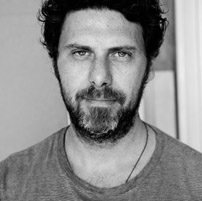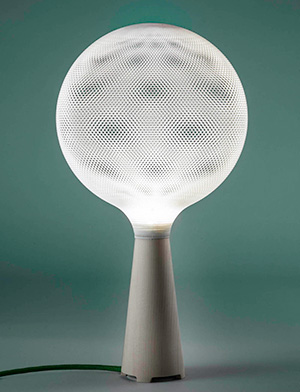3D Printing was born as a “boring” industrial process. It allowed – and allows – companies to save up to 90% on costs and time of prototyping but for most people that just was not interesting enough. Now that designers are starting to discover 3D printing, however, it is a whole other matter. Design can help people connect to production and manufacturing because it conveys emotions through objects, making them unique. Or at least more unique.

This year the collaboration between the designer and .exnovo continued with a new collection of 3D printed lamps named “Afilia”, a term that, in botany, describes a plant that is “leafless though not lifeless” and his work was immediately noticed in the design community. The Afilia range includes six lighting accessories and three table lamps and three pendant lights. The base and the socket rings are in hand crafted premium Swiss pine wood but the light diffuser is laser sintered in nylon to create delicate light patterns through and intricate geometrical web, in a mix of fleeting shadows, unexpected focus and compact halos.
I caught up with Alessandro, who, when I contacted him, was coincidentally attending a design book presentation just a couple hundred feet away from where I was meeting two entrepreneurs planning on opening up a 3D print shop in Milan. Since I know close to nothing about what goes into the product design mental process I took the chance to ask him what 3D printing means and can mean for artistic and commercial creativity.

To make his pieces “warmer” and more appealing to a selective crowd of people unfamiliar with 3D printing technologies, Zambelli combined 3D printed nylon with hand crafted Swiss pine wood because, he explained, “it is a material that can better relate with all people and can give an added value to a product that would be too cold and a bit too far out there if it had been entirely made in nylon. I felt I needed to bring it back to Earth using wood for bases and sockets.”
3D printing, however, remains central and will become even more central in the world of creative design. As in Zambelli’s pieces, it might not ever (and probably should not) entirely replace traditional manufacturing processes and materials but simply add new possibilities. “Technology fascinates me and I always try to stay up to date with all the new creative possibilities it offers. In fact, now, when I think of a particular detail I want to develop, the first thing that I consider is: can I 3D print it?”




